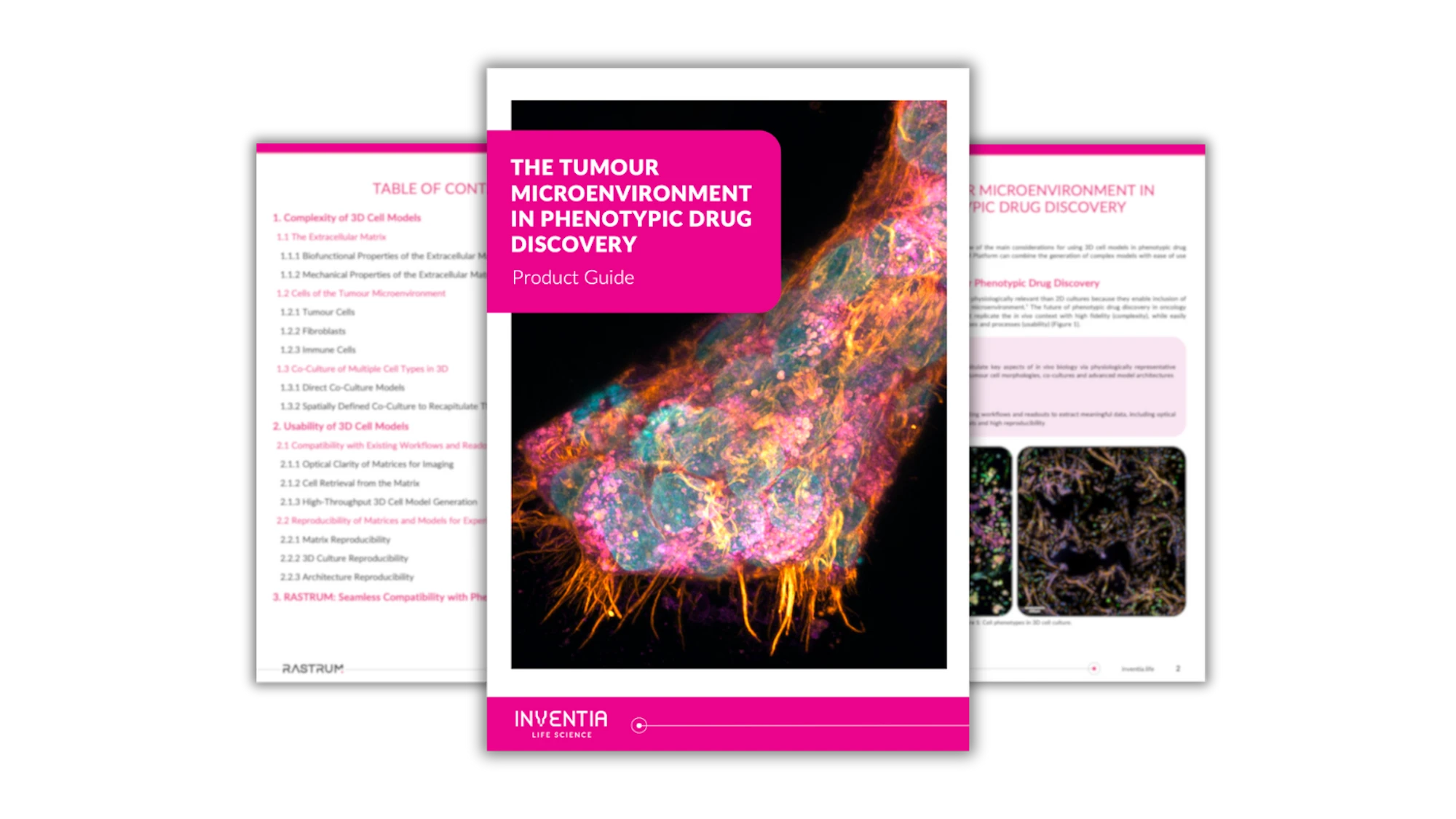
The tumour microenvironment in phenotypic drug discovery
Introduction
This product guide will provide an overview of the main considerations for using 3D cell models in phenotypic drug discovery, and highlight how the RASTRUM™ Platform can combine the generation of complex models with ease of use in downstream applications.
3D Model Requirements for Phenotypic Drug Discovery
Matrix-embedded 3D cell models are more physiologically relevant than 2D cultures because they enable inclusion of key elements that recapitulate the tumour microenvironment. The future of phenotypic drug discovery in oncology relies on sophisticated 3D cell models that replicate the in vivo context with high fidelity (complexity), while easily integrating with existing downstream analyses and processes (usability).
- Complexity
Sophisticated in vitro models that recapitulate key aspects of in vivo biology via physiologically representative biofunctionality, mechanical properties, tumour cell morphologies, co-cultures and advanced model architectures.
- Usability
Models that can be easily utilised in existing workflows and readouts to extract meaningful data, including optical clarity for imaging, multi-well plate formats and high reproducibility.